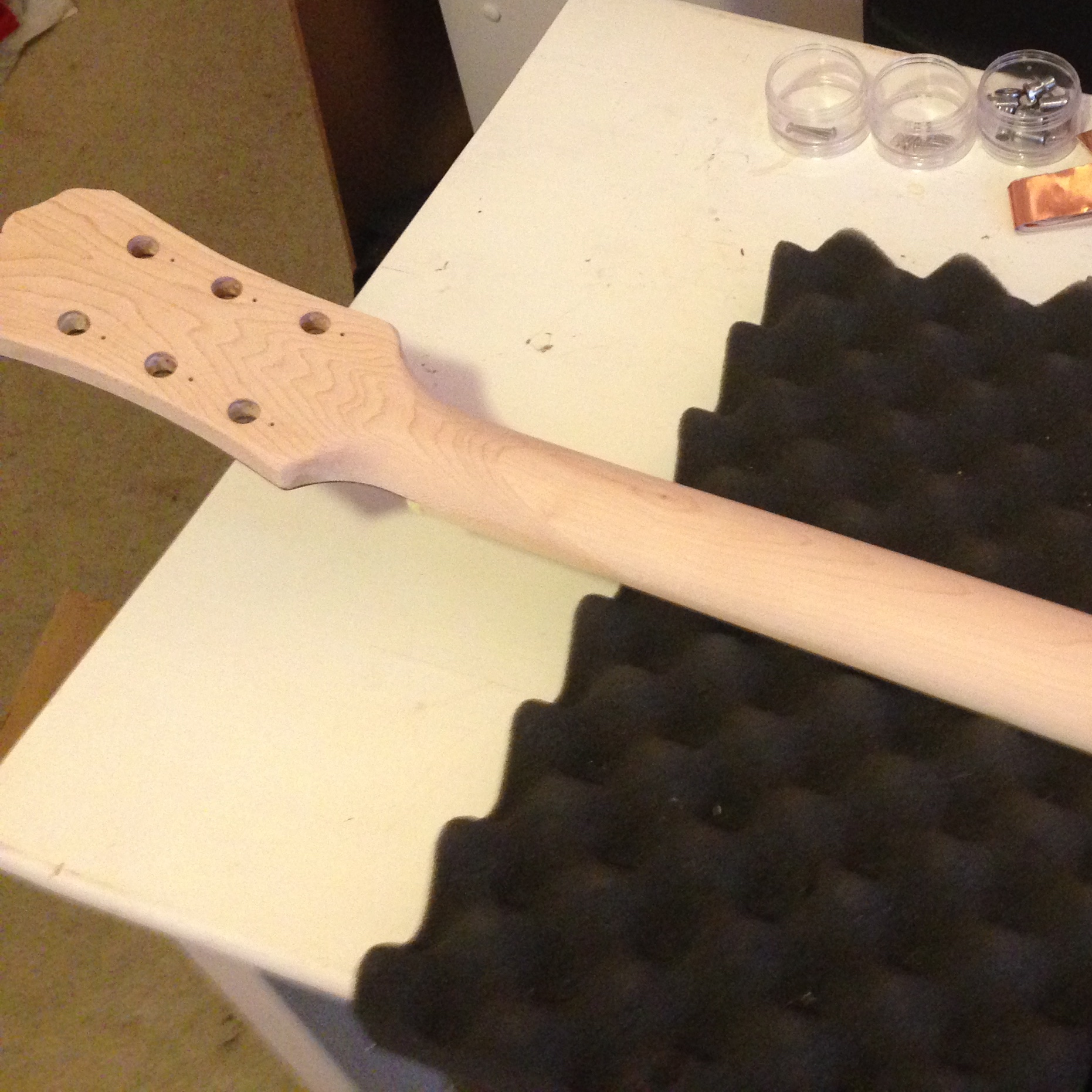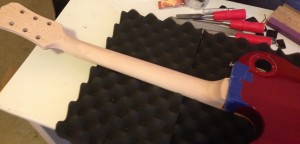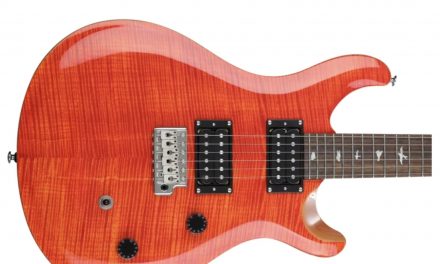I’ve been unhappy with my Epiphone Les Paul Standard Plus for years. When it was new, I liked it, but I never loved it. It’s been through a lot of bridge pickups – it started with the stock Epi pickup, which sounded dull and flat. I replaced it with an EMG Select, which is a cheap pickup that was slightly better sounding. But that didn’t work for me – too meh. I wanted something hot. So I went overboard and bought a Seymour Duncan Invader. That was very hot – too hot. Didn’t like it. So I bought a matching set of GFS Humbuckers with Alnico II pickups. That got me to where I wanted to be – a 70’s sort of sound. Early Rush, AC/DC. Crunch. It sounded good, but not great, but I liked it. And then I got my Gibson Les Paul 50’s Tribute with P90’s, and it did that sound way, way better. What to do? I bought a Dimarzio Super Distortion and put it in the Epi LP. So now it’s hotter, but not insane hot. Sounds very good.
So? So it doesn’t play very good. The neck was fat. Not huge fat, but fat. So’s the neck on the Gibson, but I use that mostly for chords. I’ve been trying out a lot of Les Paul’s with 60’s style necks, pretty skinny around the first 3 frets, and I like that a lot. So I decided to experiment on the Epi. I’d take all the finish off, then take some wood off to make the neck skinnier. Advice online ranged from “Just do it, it’s no big deal” to “Do not attempt to do this if you’ve never done it before.” I did it anyway. And learned a lot, and now I’m typing up what I learned.
Step one was to tape off the fretboard and the parts of the guitar near the neck, so I wouldn’t accidentally hit them with a file or something. I used blue painter’s tape for this, and it worked like a charm. Doesn’t take anything off the guitar when you remove it.
I started sanding the back of the neck with some 120 grit sandpaper. Sandpaper uses a number to determine how course or fine it is – the higher the number, the finer the paper. Course is good for getting a lot off in a hurry, and fine is good for making it glassy smooth. After a really good workout, I could start to see that I was almost to the wood, and my arm was ready to fall off. Screw that.
I watched a YouTube video of a guy taking off a lot of wood from a guitar neck using a file he called a rasp. Looked like a good way to go, so I went to Lowes and bought one. It did indeed take the finish off much more quickly, along with some wood. I got all the finish off. It comes off as a white powder, so you’ll know when it’s all gone – no more powder. Well, that and you see the wood.
The rasp file works. And if you aren’t familiar with using it, it also marks up the wood pretty badly. This is not a problem if you want to remove a lot of wood like I did. But if someone wanted to just remove the poly finish and not any wood, a rasp file isn’t a good way to go, unless you’re an expert with it.
I also used my chisels a little bit, to get some of the more stubborn poly off. Again, it beats the hell out of the wood which means more sanding later on.
Once all the finish was off, I continued on with the rasp to get the wood down to where I wanted it. Once done, I started hand sanding the neck with 120 again to try to level out the wood so it wouldn’t show the spots where I butchered it with the rasp. It worked, but again it was slow going. When the going gets tough, buy a better tool. Maybe there was a small sander I could find that didn’t cost too much money.
There was. I bought a “Mouse” by Black & Decker for under $40. It was what I should have started with at the beginning. Small enough to control, powerful enough to sand the crap out of something. I sanded down to fairly smooth and consistent with it, then I went back to hand sanding to get the curve of the back of the neck exactly how I wanted it. Then I broke out the 800 grit and hand sanded with that. And it gave the neck a super smooth feel – smooth like glass. Wonderful.
The next step is to put strings on it and play it. Once that’s done, if I like it, I’m going to rub some Tung Oil Finish (low gloss) into it, and let it dry for a day, then maybe do another layer and let that dry for a day. And then hit it again with the high grit sandpaper to smooth out the finish. And that’s it. I hate to put anything on the neck, because it feels so wonderful as it is right now. But if I don’t, moisture from the air and from my hands will get into the wood and make it weaker, which means the strings will bend it, and then I’m sunk. So it’s necessary to protect the wood with some type of sealant. I chose Tung Oil because it was highly recommended on some sites I read. I’ll update this post to include how that worked out.
So if you want to do this, consider buying a Mouse by Black & Decker or some other sander designed for detail work. But be ready to set it aside and do the final shaping and sanding by hand, because a sander wants to make things flat and you don’t want a flat neck. Or maybe you do. But be aware that shaping needs to be done by hand.





